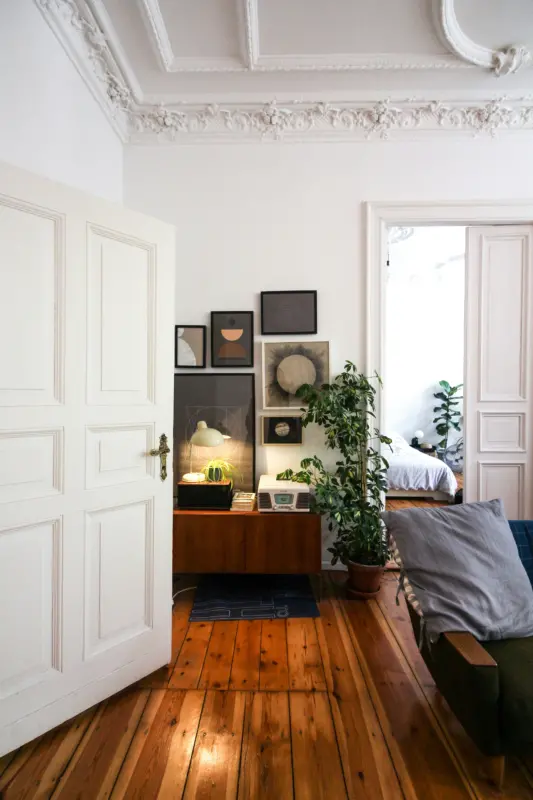You always want to have high-quality repairs and reliable doors in your home. In order not to miscalculate the choice of interior doors, decide what kind and design you need before buying . You can find all the necessary information to select inexpensive but high-quality doors in this article.

According to what characteristics do choose an interior door?
Design and materials
Before you buy the doors to the apartment, decide on the design of the premises. Already starting from a particular style, you can choose a door made of natural wood, MDF, glass, PVC, or chipboard. It is not necessary that all doors look the same, but it is essential that they are in harmony with the situation and do not bring dissonance into the room.
Weight and strength
The most durable, without a doubt, are noble woods (apple, oak, wenge, walnut). But get ready because such material will be heavy and require meticulous care. Therefore, putting such doors in an office or library is more appropriate. It would be best if you also considered the width of the passage. Due to the weight of solid wood, doors that are too wide will be unwieldy, so it’s easier to install two doors rather than one. For the bedroom and nursery, it is better to choose lighter models, for example, from veneer. Even a child can handle them, plus natural wood coating looks very impressive.
Resistance to moisture and mechanical damage
For bathrooms, kitchens, and toilets (and all rooms with high humidity), it is recommended to use laminated surfaces. If there are children and pets in the house, then it is wiser to take a veneered door, any damage to which is easily repaired.
Soundproofing
Good soundproofing of the rooms is also essential. PVC has poor sound insulation because. May resonate. But MDF, thanks to the internal cellular structure, absorbs sound well.
Thermal insulation properties
Thermal insulation is most relevant for private houses with autonomous heating. Here it is worth giving preference to natural materials. For example, doors made of solid wood or MDF with veneer. If your choice falls on plastic doors, pay attention to the number of internal cameras. There should be at least two of them, and the more, the better the thermal insulation of the room will be.
Pros and cons of MDF materials
Among the inexpensive materials for interior doors, the most popular are MDF coated with laminate or spy and plastic doors. An MDF door often consists of several layers. The inner layer is a honeycomb filler made of pine logs or solid timber. The outer layer is a fine-grained board of compressed wood fibers plus a covering of veneer or artificial materials.
Advantages of MDF:
- combination of strength and lightness of construction;
- environmental friendliness (do not contain formaldehyde and other toxic compounds);
- moisture resistance.
Depending on the finish coating, two subspecies can be distinguished: veneered and laminated doors. The veneer is a thin layer of natural wood, and the laminated coating is a film of artificial materials.
Veneering advantages:
- environmental friendliness and beauty of natural wood;
- impregnation with unique compounds that protect the product from moisture and high temperatures;
- the uniqueness of the wood texture (you will not find two completely identical doors because the wood pattern is individual, like fingerprints);
- veneered slabs does not differ from solid wood doors, except for a lower price and less weight;
- readily amenable to restoration (if the damage appears on the door, it is enough to replace the veneer layer with a new one).
Cons:
- slight differences in shades and patterns of natural wood will not allow achieving one hundred percent uniformity;
- if the recommended humidity and temperature in the room are not observed, moisture deformation or fading from direct sunlight may occur over time.
- Laminated products
Advantages of lamination:
thanks to artificial coating, you can imitate any wood (wenge, birch, oak, etc.) and give them any shade;
the film also plays a protective function, increasing resistance to moisture and ultraviolet radiation;
with an external resemblance to veneer, the laminated coating is cheaper and has many color options.
Cons:
Laminated doors are not subject to restoration. If damage occurs, you will need to replace the entire door.
PVC Doors (Plastic) The polyvinyl chloride used for door panels has a cool, smooth texture.
Pros of plastic:
- PVC is a fireproof material that can withstand the action of alkalis and acids;
- resistance to environmental factors (moisture, ultraviolet);
- low cost of materials;
- ease of installation;
- moisture resistance;
- carelessness.
Cons:
- PVC deforms when exposed to temperature, so such products should not be installed near the heater or the stove;
- plastic as interior doors looks unpresentable. It is more appropriate to use it on commercial premises than at home;
- plastic is a brittle and inflexible material that cannot withstand heavy loads.
As you can see, each type of door has its advantages, and, depending on your goals and budget, you can choose a good version of the slabs for interior doors.

 All Interior Doors
All Interior Doors Prehung Doors
Prehung Doors Doors By Style
Doors By Style Doors By Room
Doors By Room Sliding Doors
Sliding Doors Doors By Color
Doors By Color Bi-Fold Doors
Bi-Fold Doors French Interior Doors
French Interior Doors All Exterior Doors
All Exterior Doors Steel Security Doors
Steel Security Doors Fiberglass Doors
Fiberglass Doors Wrought Iron Doors
Wrought Iron Doors Aluminum Windows
Aluminum Windows Vinyl Windows
Vinyl Windows Wood Windows
Wood Windows Tables
Tables Accessories
Accessories Magic Door Hardware
Magic Door Hardware Magnetic Door Hardware
Magnetic Door Hardware Entry Handle sets
Entry Handle sets Barn Door Hardware
Barn Door Hardware Pocket Door Hardware
Pocket Door Hardware Door Levers
Door Levers Magnetic Locks
Magnetic Locks Hinges
Hinges Bathroom Mirrors
Bathroom Mirrors Wall-Mounted Vanities
Wall-Mounted Vanities
















 Steel Security Doors
Steel Security Doors